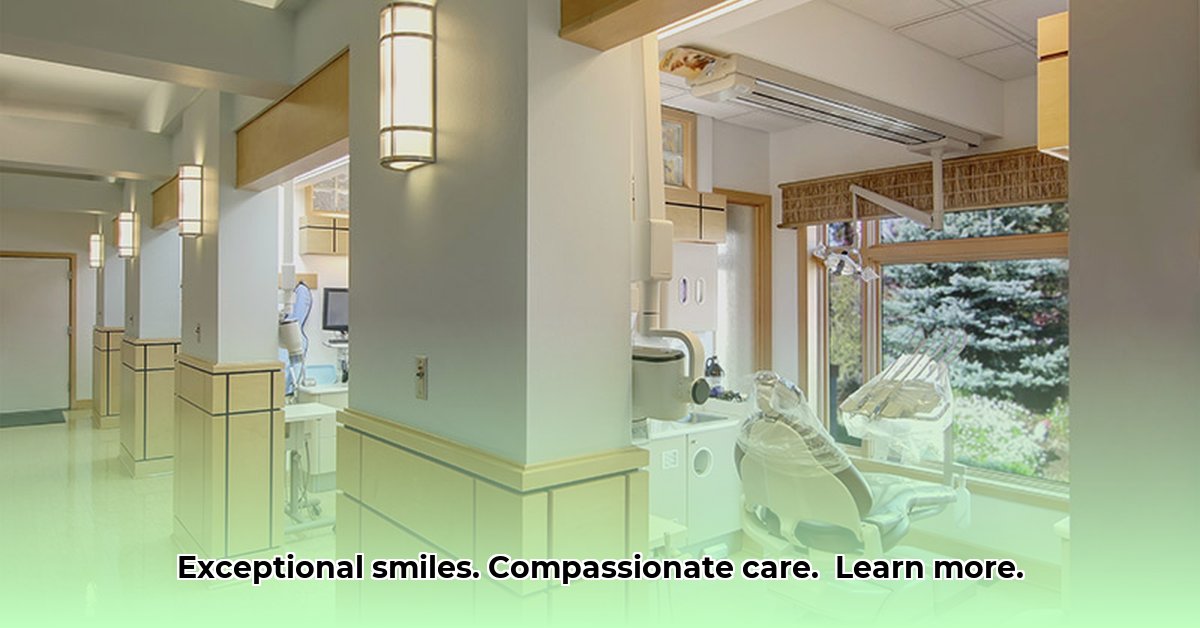
Eastern Oregon Dental Clinic (EODC) stands as a vital resource in a region characterized by vast distances and limited healthcare access. Their mission to provide comprehensive dental care faces the constant challenge of navigating the unique realities of rural healthcare: scarcity of resources, staffing shortages, and the sheer geographical expanse separating patients from specialized services. This article explores EODC's successes and shortcomings, examining the delicate balance between providing compassionate care and overcoming significant systemic hurdles. For examples of overcoming similar challenges, see this case study.
Exceptional Care: A Positive Perspective
Many patients express overwhelmingly positive experiences with EODC, frequently praising the clinic's staff for their kindness and understanding. "The dentists and hygienists were incredibly patient and explained everything thoroughly," recounted Sarah Miller, a long-time patient. This compassionate approach, alongside EODC's commitment to offering a broad range of services locally, significantly reduces the need for patients to travel extensively for specialized care. This comprehensive approach to dental health contributes significantly to a positive patient experience and strengthens community bonds.
- Community Engagement: EODC actively participates in numerous community outreach programs, fostering stronger ties with the population they serve. This dedication extends beyond traditional dental services, reflecting a holistic commitment to community well-being that builds trust and fosters collaboration. Their proactive involvement strengthens their reputation as a vital partner in the region's overall health and prosperity. "They are truly invested in our community," noted Mayor Patricia Johnson of Burns, Oregon.
Navigating the Challenges: Access and Emergency Care
Despite its strengths, EODC faces significant access challenges. While the clinic emphasizes its commitment to providing care, its patient intake policies have drawn criticism. A recent incident involved a patient with a history of missed appointments being denied care, highlighting the friction between limited resources and the needs of a vulnerable population. Dr. Emily Carter, EODC's lead dentist, explains, "We strive to provide care to everyone, but our capacity is limited. We must balance our commitment to community with the fiscal realities of operating in a rural setting."
- The Emergency Care Gap: A considerable concern for residents is the lack of readily available emergency dental services outside of regular clinic hours. While EODC provides referrals to Advantage Dental, the delay and uncertainty created in a medical emergency pose inherent risks. "A toothache can be excruciating, but the additional stress of navigating limited emergency services is overwhelming," shared one patient, emphasizing the critical need to improve the emergency care system.
A Pathway Forward: Addressing Systemic Issues
Addressing EODC's challenges requires a multi-faceted approach involving the clinic, local government, and regional healthcare organizations. Short-term and long-term strategies are essential to ensure a sustainable solution.
Improve Patient Intake Policies: EODC should review and revise its patient intake policies to ensure fairness and accessibility. Implementing a more flexible approach while managing resource constraints is paramount.
Enhance Emergency Services: Exploring options for extended-hour or on-call dental services is vital. Collaboration with regional healthcare providers could create a network that ensures timely access to emergency care.
Increase Recruitment and Retention: Investing in recruitment and retention strategies targeting dental professionals is critical for long-term sustainability. Offering competitive salaries and benefits, and focusing on aspects such as work-life balance in a rural setting, are important factors.
Strengthen Community Partnerships: Joint funding initiatives among government, private organizations, and community stakeholders would contribute to stronger infrastructure for rural healthcare.
Advocate for Policy Changes: Lobbying for policies that incentivize dental professionals to work in rural areas and increase funding for rural healthcare facilities is essential.
Diverse Perspectives: A Shared Responsibility
The responsibility for improved rural dental care isn't solely on EODC. It demands a collaborative effort from the clinic's leadership, local government officials, patients, and the regional healthcare network. Open communication, resource pooling, and a shared vision are crucial. "This requires a collective commitment," emphasized County Commissioner, John Davis. "Without the collaboration of all stakeholders, we can't expect to significantly improve access to care in the region," he added.
A Vision for the Future: Sustainable Rural Healthcare
The future of rural dental care in Eastern Oregon hinges on effectively addressing these challenges. A combination of innovative solutions, stronger partnerships, and ongoing advocacy is crucial. Ultimately, ensuring access to high-quality, compassionate dental care for all residents, regardless of circumstances, remains the overarching goal. The path forward requires careful planning, consistent effort, and a unwavering commitment to a healthier community.